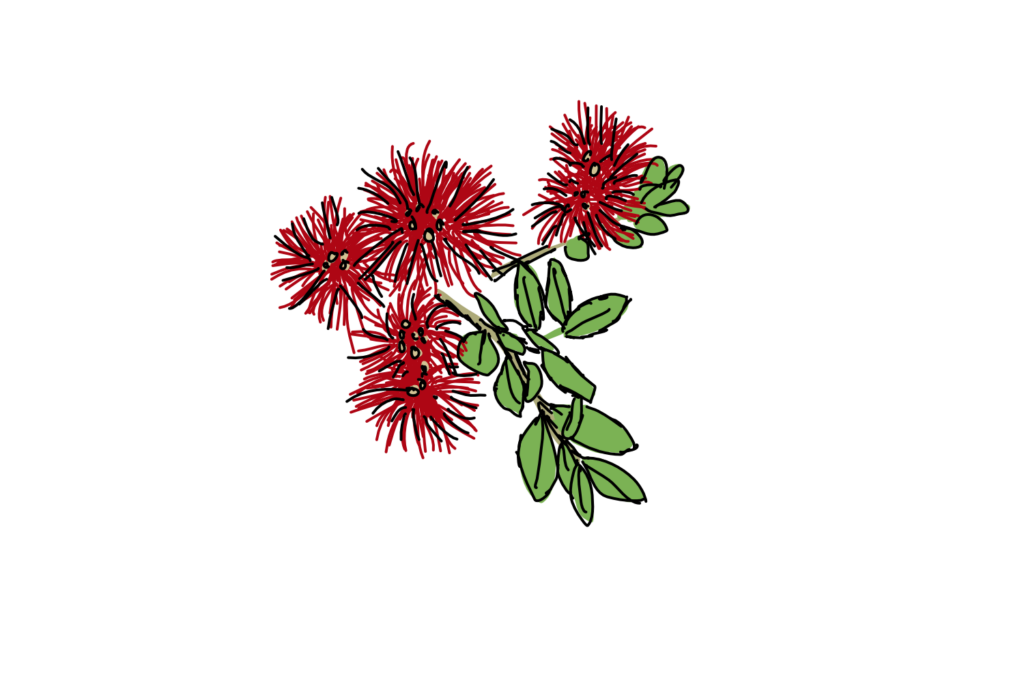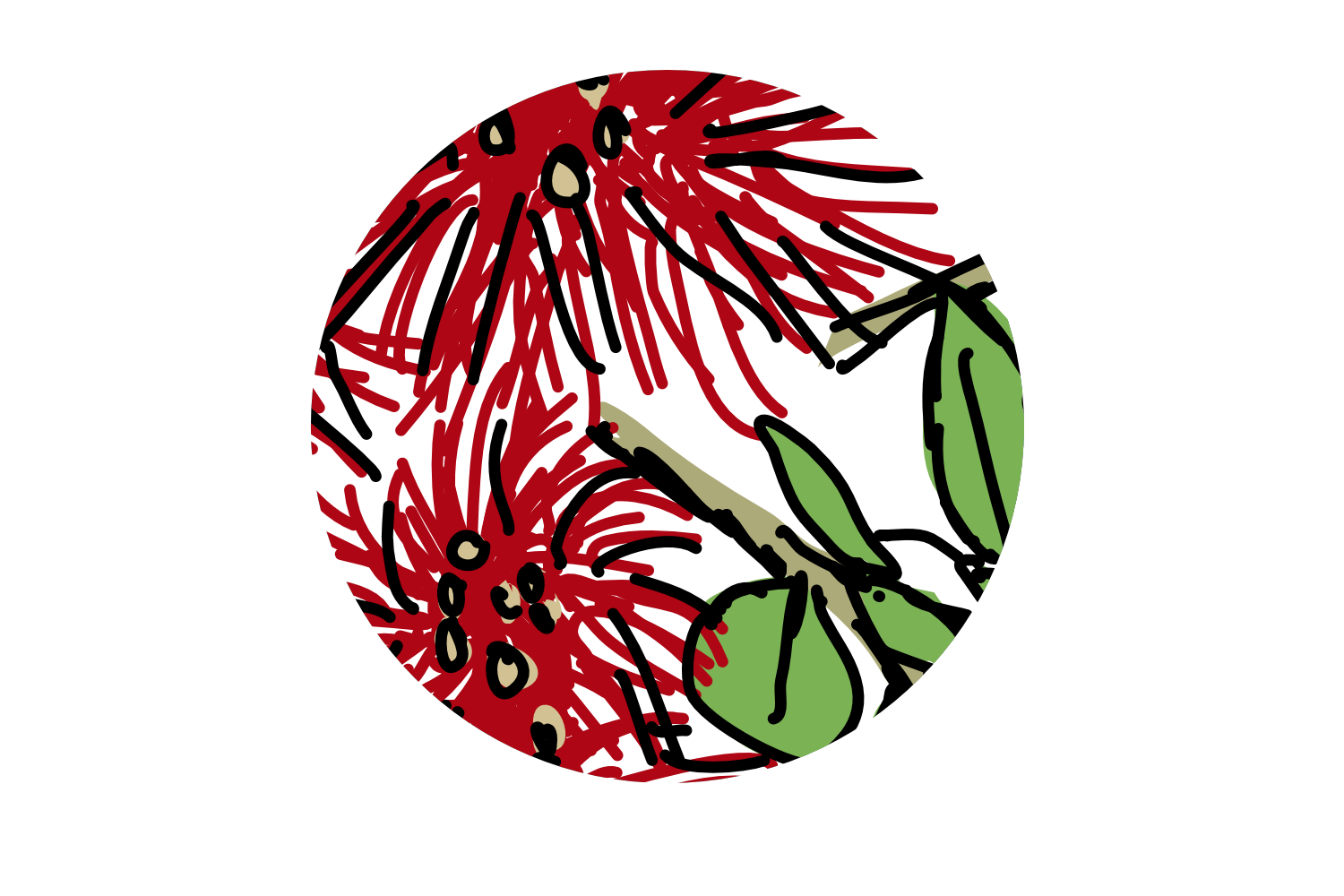As I was reading fun facts about my beloved West Australian Christmas tree, wikipedia had the audacity to note that New Zealand also has its own Christmas tree. And I suspect it just might be better.
The Basics
Known locally as pōhutukawa or ‘iron tree’, the New Zealand Christmas tree belongs to the myrtle family- Myrtaceae. It’s also a ‘coastal’ tree, but my feeling is that New Zealand is mostly ‘coast’ or ‘mountains’ in the way that Australia feels like it’s ‘coast’ or ‘desert’, so I’m guessing we had a 50:50 there.
Here are some ways that pōhutukawa might just be better than our dear old Nuytsia:
- It’s scientific name is Metrosideros excelsa. That first part basically translates as ‘iron heartwood’, referring to both colour and hardness. Meanwhile, the species name literally means ‘highest or sublime’.
- The biggest pōhutukawa is nearly 20 m high (+ nearly 40 m of branch spread). It’s said to be over 300 years old, and has been named: Te Waha o Rerekohu. Another pōhutukawa has been said to be alive for more than 800 years. Unlike our Aussie tree, this growth and longevity comes without stealing nutrients from others.
- It flowers form November to January (peaking around Christmas). The flowers are brilliant red, which actually fits in with the traditional Christmas theme. Plus, for those of you not into red, some isolated populations of the tree, as well as deliberately developed commercial cultivars, can also have pink, yellow, or even white flowers.
- Pōhutukawa is easily cultivated (unlike Nuytsia), and can be easily introduced to other countries with similar sidewalk. A Coruña, a city in Spain, has even adopted the species for its floral emblem. In South Africa it is now considered a pest.
- It has a range of historical uses. It’s wood was important for making shipping parts and weapons, its bark was used as an astringent against dysentery and diarrhoea (in tea) and to prevent inflammation of wounds, and the flowers produce a thin ‘honey’.

That’s it for this wonderful New Zealand native.
Do any of your home countries also have their own version of a Christmas Tree?
We found this site very useful. Plus, wiki!
